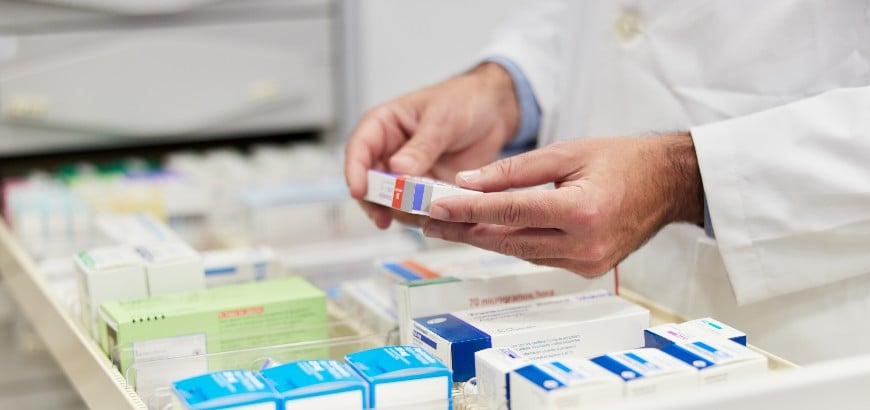By: McKesson Health Systems Editorial Team
Read time: 4 minutes

Managing Pharmacist Consultant
Join us as Larry Alaimo, PharmD, Managing Pharmacist Consultant with McKesson Macro Helix, provides background and expertise for retail pharmacy strategy and how to drive better outcomes for health systems.
Q: How did you come to McKesson Macro Helix? How has retail pharmacy evolved over the last few years?
A: I started my career in retail pharmacy when the sound of a dot matrix printer was the background to my conversations with patients and providers. Since then, the complexity of payers networks, PBMs, prior authorizations, high deductibles, tiered formularies, preferred, non-preferred, specialty medications and beyond have created a complex and matrixed system which our patients and providers must navigate.
We have seen tremendous advancements in therapies, yet pharmacy’s role in ensuring access along with appropriate and effective utilization remains a core determinate of patient outcomes. To that regard, retail has grown in the community and its place has progressed within health systems.
If the past two years have taught us anything, it’s that retail pharmacy has evolved beyond dispensing with increased focus on patient education, and extended services such as immunization and point-of-care testing. Review data shows that patients feel their relationship with their pharmacist has changed (2022 Medication Access Data guide CMM).
Q: What role can retail pharmacy play in health system strategy?
A: Retail pharmacy is aptly positioned to enable a successful initiation and management of a patient’s pharmaceutical care plan (or drug therapy plan) and is not limited to traditional services of dispending and consultation. When we look at the continuum of care as a patient transitions within a health system, each touchpoint of care creates an opportunity to influence outcomes.
There are also many variables that influence outcomes, and once a patient moves along the care continuum, it becomes more challenging to address barriers reactively. Having a connected partner within the health system during this crucial phase of a patient’s care plan via retail pharmacy can make a significant impact on the outcomes and overall patient experience.
Q: How does this connectivity within the health system drive outcomes?
A: “Connected partner” is the operative statement as it denotes collaboration prior to and after prescribing in order to address potential barriers and ensure there are no gaps in transition along patient care continuum.
Once a diagnosis is made, a care plan is developed which includes non-pharmacologic therapies and often pharmaceutical care. At this point, the work towards delivery of care has just begun.
Any time there is a handoff or transition in care there is an opportunity for gaps and barriers to present themselves. A recent study reported that 27% of prescription abandonment is related to access challenges.1 A 2018 IQVIA study determined that patients with higher out-of-pocket costs are more likely to abandon their new prescriptions at the pharmacy.
Through integration of EHR access across all providers, including pharmacy and the connected network of services within the health system, the continuum of care is enabled to flow without unconnected handoffs. For example, the Meds to Beds services is a strategy leveraged to optimize transition of care and proactively reduce barriers to access.
Connecting retail to outpatient clinics and services bridges the gaps within the continuum of care for patients. It provides a coordinated support system which is vital when navigating the ever-growing complex managed care system and medication-use process.
Learn how partnering with McKesson can help your health system achieve more.

Share
Post
Post
Email